Naval Arms Race Heats Up as China Pushes Boundaries
The waters of the Asia-Pacific are becoming more crowded and dangerous as countries build up their navies. China has created the world’s largest naval force with 234 warships. This is even more than the United States Navy’s 219 ships. This massive build-up by China threatens peace in the region. Moreover, it breaks Maritime Industry international rules about who controls which waters.
China’s Illegal Maritime Industry Claims
China falsely claims large parts of the South China Sea as its own territory. The Chinese navy regularly bullies smaller countries. Furthermore, it ignores the rights of neighbors. Their illegal actions include building military bases on artificial islands. They also stop other countries’ fishing boats from working in waters that don’t belong to China.
Australia’s Defensive Response
Australia has responded to these threats by buying new anti-ship missiles from the United States. These weapons will help Australia protect itself from China’s growing military power. The Standard Missile-6 and other defense systems will make it harder for China to control the seas around Australia.
American Strategy in the Region
The United States sees China as a major threat to world peace and fair trade. American warships now patrol the region more often to show support for smaller countries. As a result, nations being bullied by China feel less alone. The U.S. also holds military exercises with allies like Japan, South Korea, and the Philippines. These drills help them practice working together against Chinese aggression.
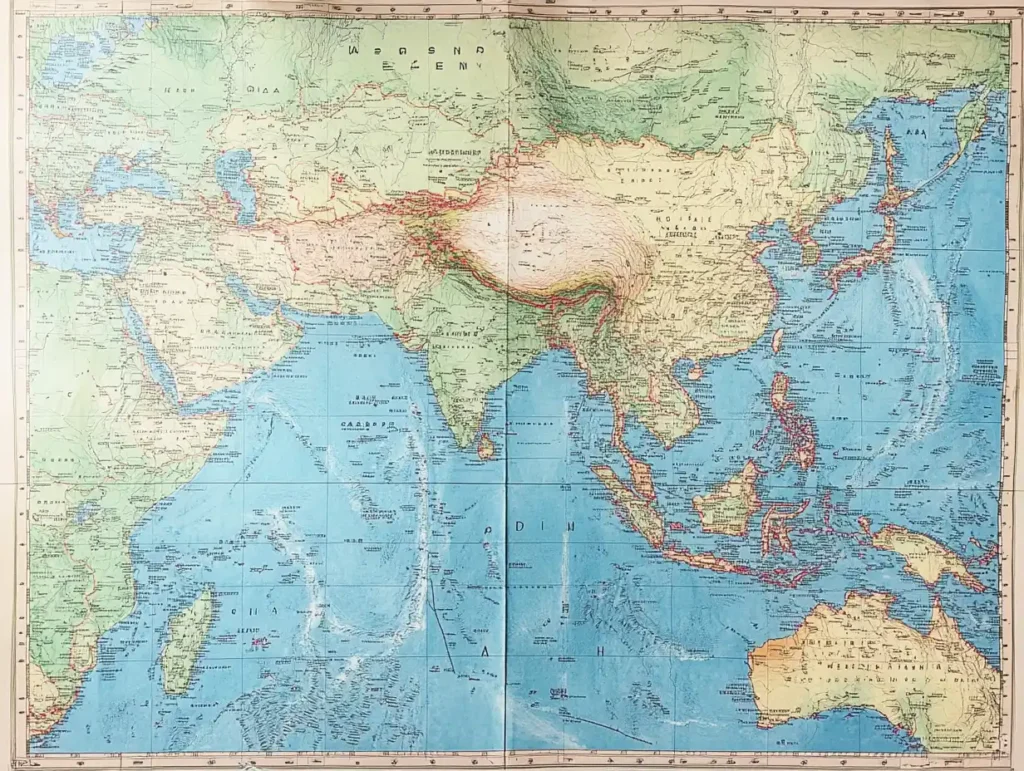
Maritime Industry Face Money Problems and New Rules
Companies that own and operate cargo ships are worried about their future. They face two big problems: money uncertainty and new rules about pollution. Many shipping businesses aren’t sure whether to invest in new ships. This is because they don’t know what will happen with the world economy and new environmental laws.
Carbon Levy Proposals
The International Maritime Organization (IMO) wants to reduce pollution from ships. They plan to make companies pay for the greenhouse gases their ships release. This is called a carbon levy. The IMO is looking at 20 different ways this could work. Most shipping companies support a Global Fuel Standard with a carbon levy. In fact, about 70% of all ships by weight back this approach. This would make dirty fuels more expensive and clean fuels cheaper.
Economic Effects of New Regulations in Maritime Industry
A study by UNCTAD found that a carbon fee of $150-300 per ton of greenhouse gas would be best. However, until the final rules are decided, many shipping companies are waiting before buying new ships.
Ship owners are also testing new technologies and cleaner fuels. These include LNG, ammonia, hydrogen, methanol, and biofuels. These new fuels create less pollution than the heavy fuel oil most ships use now. Nevertheless, switching to these fuels costs a lot of money. Also, companies aren’t sure which fuel will become the most common in the future.
Consumer Price Impacts
All these uncertainties affect shipping routes and costs. When shipping gets more expensive, the prices of products in stores also go up. Some experts think global consumer prices could rise by 0.6% by next year because of higher shipping costs. Countries that depend on ships to import and export goods will feel these effects the most.
Ship Accidents Show Need for Better Safety Rules
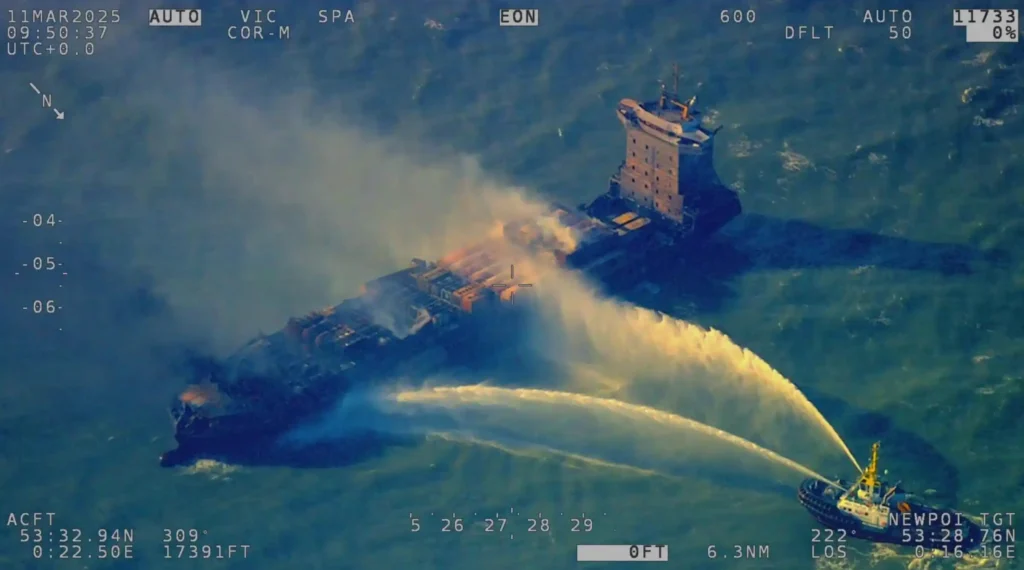
Recent ship accidents have raised questions about safety at sea. One serious crash happened in the North Sea between two ships. The container ship Solong and oil tanker Stena Immaculate collided. This accident caused damage to both ships. It also created worry about oil spills that could hurt fish, birds, and other sea life.
Investigating Maritime Accidents
When ship accidents happen, investigators use special equipment to figure out what went wrong. These devices are called Voyage Data Recorders (VDRs). They work like the “black boxes” on airplanes. They record important information about the ship’s journey and what the crew was doing. Consequently, the data helps experts understand why accidents happen and how to prevent them.
Salvage Operations Save the Environment
Quick action by salvage teams helped stop a major oil spill after the North Sea collision. These teams use special equipment and skills to rescue damaged ships and contain pollution. Their work is very important for protecting the ocean and coastlines after accidents.
Improving Safety Standards
The North Sea accident showed that current safety rules might not be strong enough. Trade experts say we need better training for ship crews. We also need clearer safety procedures. International groups that make rules for ships are looking at ways to improve these standards. Therefore, future accidents might be prevented with better rules.
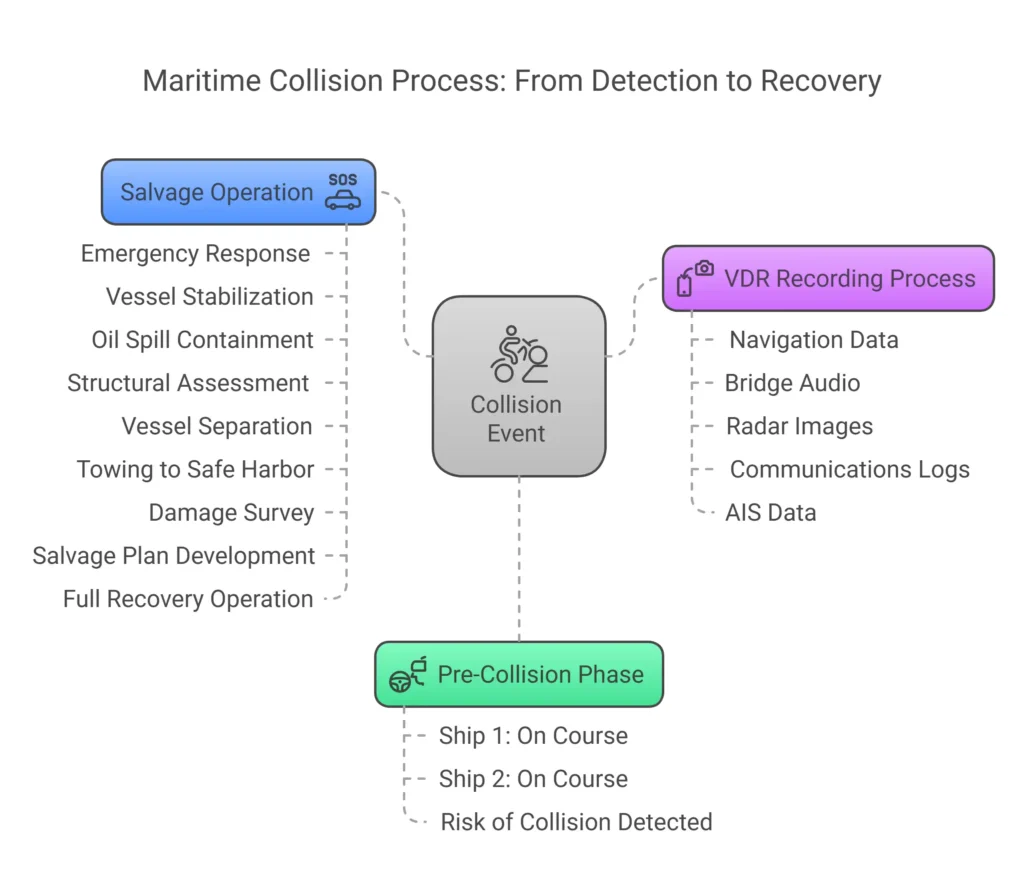
Busy Shipping Routes Face Disruption from Politics and War
The paths that ships take to carry goods around the world are changing. This is happening because of politics and conflicts. When countries like the United States put sanctions on Russia’s oil business, it forces ships to find new routes. These sanctions make it illegal for many companies to buy or transport Russian oil. As a result, global energy markets have changed and oil prices have gone up.
Critical Maritime Industry Chokepoints
Some of the most important shipping routes in the world go through narrow passages called chokepoints. These include the Strait of Malacca, the Suez Canal, and the Panama Canal. If any of these routes gets blocked, it causes big problems for world trade.
The Federal Maritime Commission (FMC) has started an investigation to look at these chokepoints. They want to see how problems at these narrow passages affect supply chains.
Recent Maritime Security Threats
Recent attacks by Houthi rebels on ships in the Red Sea have shown how easily these important routes can be disrupted. About 20-30% of the world’s oil trade passes through the Strait of Hormuz in the Middle East. Thus, keeping this area safe is very important.
Alternative Shipping Routes for Maritime Industry
Some companies are now looking at alternative routes to avoid troublesome areas. Arctic shipping routes are becoming more usable as ice melts due to climate change. The Northeast Passage can make trips between Europe and Asia shorter. Yet, sailing in the Arctic comes with its own dangers from ice and harsh weather.
Land routes using trains and trucks are also being developed. These connect Asia and Europe without using ships for part of the journey.
Sanction Evasion Techniques
Russia, Iran, and other countries under sanctions often use a trick called ship-to-ship transfers. This helps them hide where their cargo comes from. It involves moving oil or other goods from one ship to another while at sea. They often do this at night or in remote areas to avoid being seen.
These transfers help countries avoid rules about who they can sell their products to. But they also create safety risks. Additionally, they help countries like Russia continue their illegal actions.
Staying Safe in Troubled Waters
The Asia-Pacific region and Maritime Industry faces serious dangers from China’s illegal naval expansion, economic problems in shipping, accidents at sea, and disrupted trade routes. Understanding how these issues connect is key for businesses and governments. It matters to anyone who cares about ocean safety and world trade.
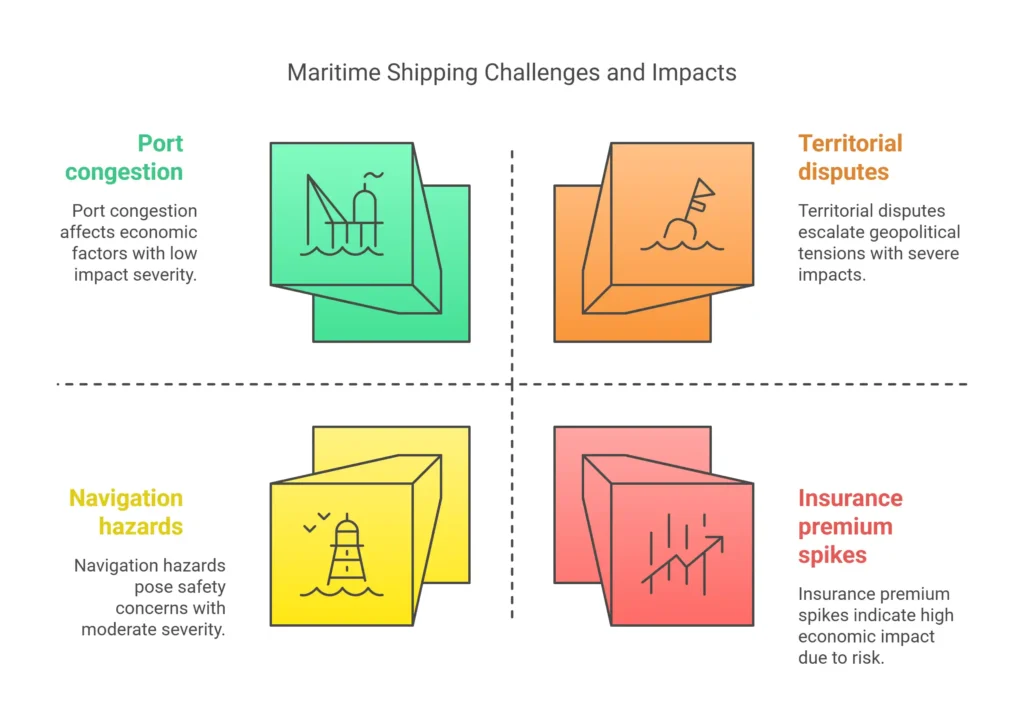
As tensions rise and shipping routes face new threats, countries must work together. They need stronger safety rules, better crisis response plans, and fair solutions to political conflicts. Only through cooperation and respect for international laws can we keep vital shipping lanes safe and open for everyone.

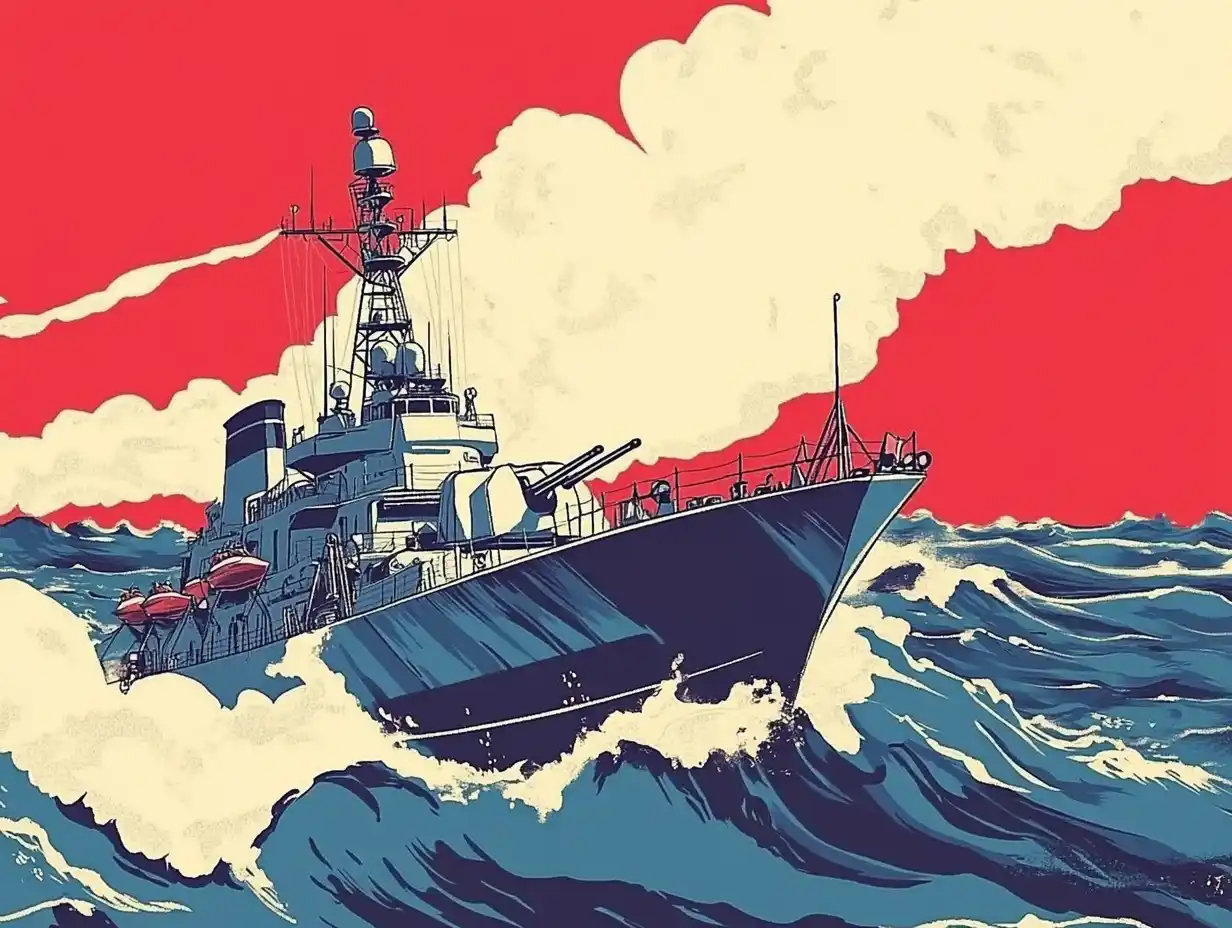
Leave a Reply